Hanna-Mari Blencke, Wolfgang Breuer
Opening: Friday, January 25th, 2008, from 7pm
Exhibition: January 26th – February 16th, 2008
open by appointment +49 (0)179 947 30 40
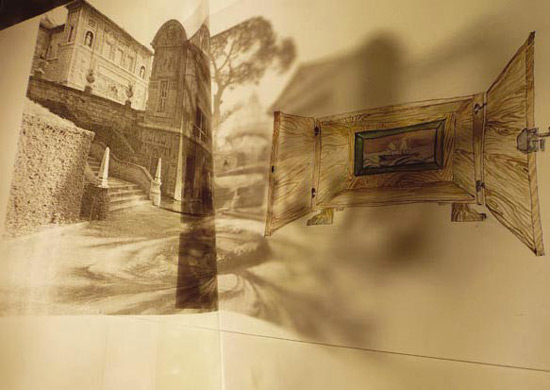
Opening: Friday, January 25th, 2008, from 7pm
Exhibition: January 26th – February 16th, 2008
open by appointment +49 (0)179 947 30 40

Opening: Friday, December 7th, 2007, from 7pm
Exhibition: December 8th – 23rd, 2007
open by appointment +49 (0)179 947 30 40
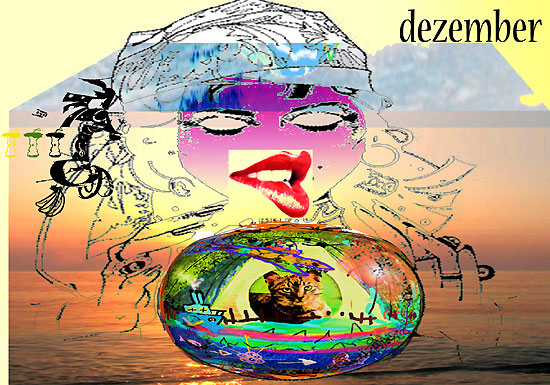
Samstag, 24. November 18 Uhr
Eine szenische Lesung
Detektivin: Alice Creischer
Monsieur Delarue: Clemens Krümmel
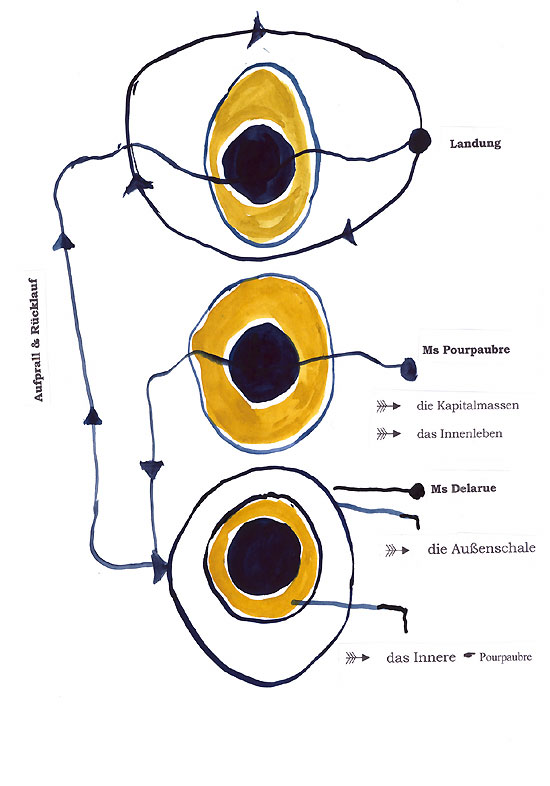
Diese Veranstaltung wird ermöglicht durch:

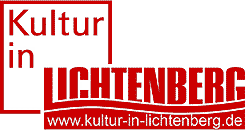
Objects from the Prison
Curated by Joachim Baur
Opening: Friday, October 26, 2007, from 7pm
Exhibition: October 27 – November 17, 2007
open Thu, Fr, Sa 3 – 7pm and by appointment +49 (0)179 947 30 40
Sunday October, 28 – 6 pm conversation with Rolf Heißler
Thursday November, 1 – 7 pm conversation with curator Joachim Baur
(in cooperation with “Schnittpunkt Berlin” – exhibition theory & practice)
Rolf Heißler was a member of the German guerilla group, the Red Army Faction – RAF. During his 22 years imprisonment from 1979-2001 his mail was monitored and about 2000 mails confiscated. Using examples of these objects, this exhibition focuses on the struggle for control, for communication between ‘in’ and ‘out’, and the diverse projections under the conditions of isolation. The show throws an unusual – at least an uncommon – glance at the long history of confrontation between the RAF, the state and the political movement.
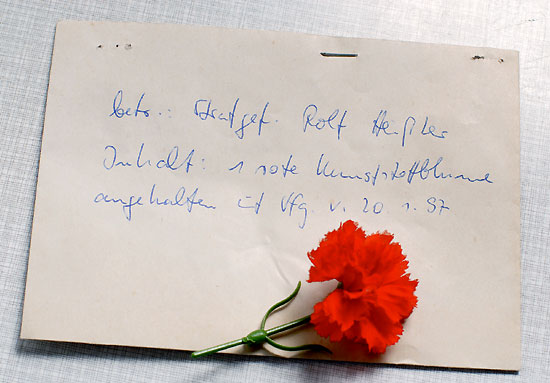
A red plastic clove, dried orange peel, countless pamphlets, mussels, dried flowers, sparklers, newspaper cuttings, posters, postcards, socks, a kid’s drawing, lavender… the most different things were sent to Rolf Heißler during his 22 years in prison but they all had one thing in common: confiscation. At first glance many items seem unimpressive, you might wonder, ‘Why was this sent’ or, ‘Why was it withheld’?
At second glance the conditions of isolation and solitary confinment can be discerned, as can the attempts to break through this closed circuit.
The objects are sediments of the prison regulations and visible witnesses of a panoptical / an omnipotent prison regime based on excluding sensual perceptions. They stand for persistent attemps to develop some sort of relationship and communication between ‘in-‘ and ‘outside’. They reveal manifold forms of projection – from the state declaring the most banal objects ‘dangerous’ to what the prisoner’s acquaintances thought would best meet his needs.
Almost daily, they demonstrate a long-standing, constant struggle for control: from the authorities over ‘law and order’ in jail – from the prisoner over his life. Heißler’s position as an acting subject within this conflict of censorship and confiscation is evident. Countless letters of complaint and a file listing and annotating all confiscations show his strategy of a ‘control of the control’.
Last but not least appear in these withheld mails – like in a multiple broken mirror – the social and political movements of the 80’s and 90’s with their themes, discussions and activities: international solidarity movement, squatting, anti-fascism, anti-war- and feminist movements, protest against census and social inequality.
On unusual terrain these objects unfold a complex triangular relationship between state, social movement and a prisoner from the RAF.
Freitag, 14. September 2007 ab 19 Uhr
Ausstellung: 15. September – 6. Oktober 2007
geöffnet n. tel. Vereinbarung – ++49(0)179-9473040
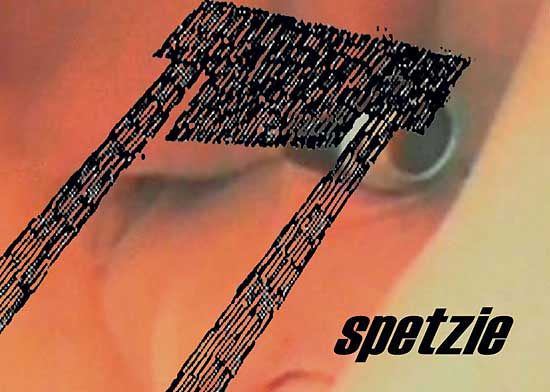
Opening: June 15 from 7pm, Exhibition: June 16 – July 7, 2007
open Friday and Saturday 3-7pm or by appointment
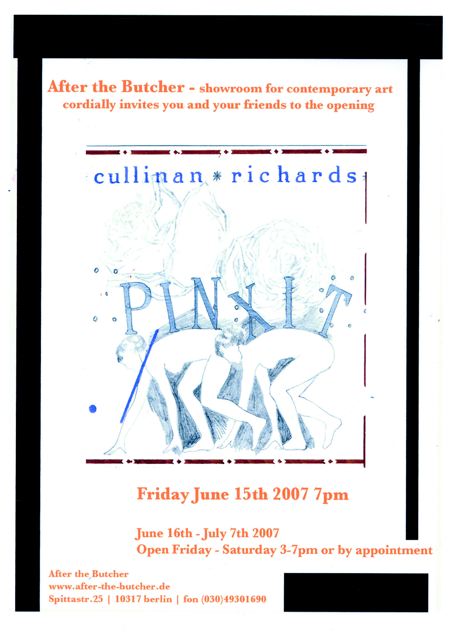
We hoped we might be able to find something positive to say about this show, and we have.
The more thought we give to PINXIT, by Cullinan+Richards, the more our desire to salvage something of value from their misadventure increases, fueled by familiarity, neat reasoning and formal travesty. In its attempt to engage in highly complex intellectual and eccentric debate PINXITopens up vast chasms between the drab actuality of the objects on show and the arrogant and shaky theoretical assertions knowingly proposed by the artists.
Cullinan+Richards are making an ‘ongoing work concerning an imagined history for these objects’, exploring ‘duplicity, doubling, betrayal and desire PINXITconsists of a script made of neon lights giving off a harsh orange glow reading ‘Et Tu’, five paintings of a male torso, and a film.
The discrepancy between the objects and accompanying assertions seems to be used here as a model for the relationship between the viewer and the artists. Taped to the glass, Neon Window (2007) spells the words ‘Et Tu’, could this refer to the fact that the paintings are actually made by someone else in 1973, and the film made in America in the 1920’s, and thus a betrayal of the viewers trust?
PINXIT exposes Cullinan+Richards as capable of discussing the tragedies of artistic extremism. Perhaps it is this carefully curated combination of a particular situation (a former butchers shop in Berlin now an artists run space) and these objects, which leads me to believe that Cullinan+Richards will definitely amount to something.
Henry Challenger and Daniel Fuchs, London-Berlin, 2007
Cullinan+Richards founded Savage School Window Gallery for text work in
2006, No.7 Vyner Street, London: invited artists include Clunie Reid,
Volker Eichelmann, Jeffery Charles Gallery with Henry Peacock, Fillip
Magazine, Tom Morton
Solo shows include: The Dummy Project, Stanley Picker Gallery,
London, 2007; Headquarters, Daniel Spoerri Foundation, Italy, 2006;
Retrospettiva, Pari & Dispari Project, Italy, 2006; Retrospektyva
IBID Projects, Vilnius, Lithuania, 2005. Independent Republic, M.O.T.
Gallery, London, 2005 Group shows include: Whitstable Biennale, 2006;
Leaps of Faith, Cyprus, 2005; Documentary Creations, Kunstmuseum, Luzern
Switzerland, 2005; Britannia Works, Athens, 2004; Ambulantes, Museum of
Contemporary Art, Seville, 2004; Values, 11thBiennale of Visual Art,
Pancevo, Serbia, 2004; Edge of the Real, Whitechapel Gallery, 2004
Opening Friday April 27th, from 7pm
Exhibition: April 28 – May 19th, 2007
Open Friday and Saturday 3-7pm or by appointment
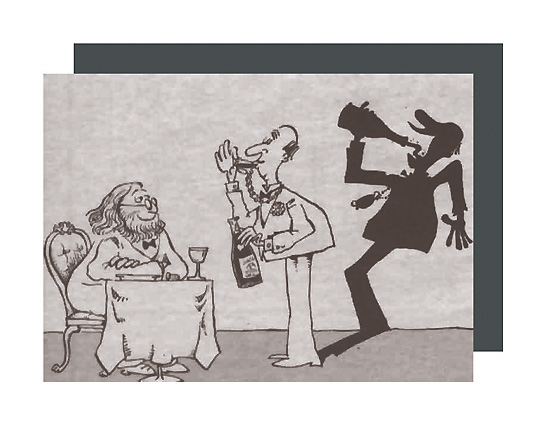
“The shadow of a person, or a person’s face, is the weakest, the emptiest but at the same time, if the light was at a fair distance, if the light fell on a flat surface, which was adequately parallel, the truest and most precise image that can be made of a human being; the weakest because it is nothing positive, it is only something negative.”
(Johann Caspar Lavater, cited after Victor Stoichita: “A Short History of the Shadow”)
after the butcher – showroom for contemporary art – is delighted to present SHADOW OF YOURSELF, the first collaboratively developed exhibition and installation of Megan Sullivan and Axel John Wieder.
Since Plinius the shadow is a fundamental model of representation and served, for example in the drawing machines designed by Lavater, for popular image-making. From the shadow a special exactness was expected whereas at the same time it was seen as a copy of a copy, as false life from second hand. In contrast to other images the shadow generally is bound directly to the human body. Often it is the shadow, that reveals, the one who stands round the corner or behind the camera but in front of the light.
SHADOW OF YOURSELF by Megan Sullivan and Axel John Wieder uses the figure of the shadow to reflect the relations between subjectivity and imagery. The installation comprises of drawings, the remake of a silhouette-chair, texts and collages which are lighted in a way that their single elements become shady and layered.
Megan Sullivan was born in Stamford, Connecticut, USA.
Axel John Wieder is co-founder of the thematic bookshop Pro qm and since 2007 director of Künstlerhaus Stuttgart.
Opening Friday March 9, from 7pm
Exhibition: March 10 – April 7, 2007
Open Friday and Saturday 3-7pm or by appointment
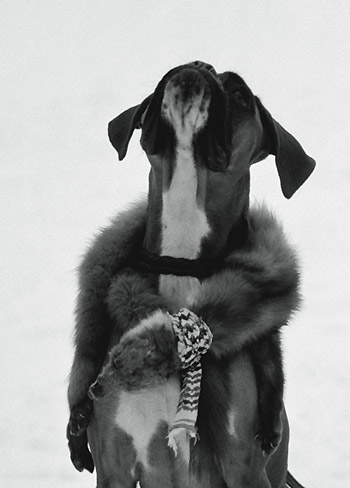
after the butcher is pleased to present Norwegian artist, Endre Aalrust, with a solo-show “As if there’s always free cheese in the mousetrap…”. Aalrust will be showing a new video piece, a series of large scale black & white photos, and sculptures made from class-related and symbolically-loaded materials.
In his work, Aalrust focuses on power structures and hierarchies and their influence on human interaction and relations. Working with a certain impurity in both content and form, invoking a mixture of high and low, slapstick and melodrama he investigates the struggle for being in a privileged position or getting the upper hand.
“The term ‘Stockholm syndrome’ was first used by Professor Nils Bejerot to explain the phenomenon of hostages bonding with their captors. In Stockholm, Sweden in 1973, two bank robbers held four people hostages for six days. The Norrmalmstorg Bank robbery received wide publicity because the hostages came to care about their captors and perceive them as protecting them against the police.”
Paul T. P. Wong
Rather than merely examining external sources of power, Aalrust attempts to focus on how repressive structures are imposed and supported through the eager participation of the “victims” themselves: the mechanisms of internalization, the production and reproduction of unjust systems through the common admiration of hierarchies of language and values.
Endre Aalrust (b.1973) studied at the Bergen Academy of Fine Arts in Norway w/Prof. Stephan Dillemuth 1998-2002. Exhibitions and videoscreenings include – “The Fantasy of a Failed Utopia…” National Center of Contemporary Art, Moscow 2007, – “Try again, Fail again. Fail better“, Momentum, Nordic Festival of Contemporary Art, Moss 2006, – “Obscure yourself“, Galerie Pierogi 2000, Leipzig 2005, – “Diversitè: Some things can be taken to the bank” Galleri Signal, 2004 Malmö, – “Jetzt und zehn Jahre davor“, Kunstwerke Berlin, 2004 – “Viper” Kunsthalle Basel, 2004 – “local connection” Künstlerhaus Bethanien 2004, Berlin.
Opening: Friday January 19, 2007, 7pm
Exhibition: January 20 – February 17
open: Friday and Saturday 3 – 7pm or by app.
* Title is borrowed from a song by Annette Wehrmann, Christoph Schäfer and Cathy Skene, Hamburg 1988
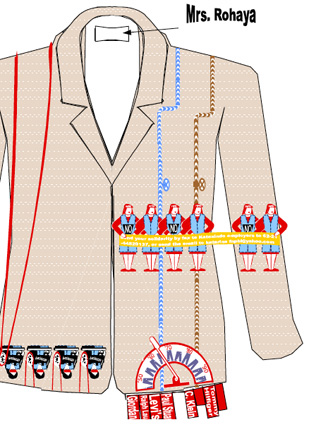
after the butcher – showroom for contemporary art – is pleased to present &Mac226;Half Jacket – Half Human’ an exhibition with Berlin based artists Alice Creischer and Andreas Siekmann. The show comprises drawings and in particular ten suits which were developed by the artists in collaboration with labourers of Brukam an occupied textile mill in Buenos Aires.
Creischer and Siekmann do their work both separately and collaboratively. Developing radical critique on the structures of power and domination their projects mostly deal with political and social questions of our everyday-life. They question us and themselves to what extend the search for alternative living and working conditions may deliver solutions of the conflicts and contradictions.
Creischer and Siekmann are doing this not only as artists but as curators, too. They organized group shows like “Violence is at the Margin of All Things”, Generali Foundation, Vienna in 2002 and „ExArgentina“, Museum Ludwig, Cologn in 2003.
Alice Creischer was awarded with the Edward Munch-Prize in Oslo, 2006. Andreas Siekman will participate at Sculpture-Projects Munster – both will participate at Documenta XII in Kassel.
Saturday, February 3, from 7pm: short animation films and discussion
As part of the exhibition &Mac226;Half Jacket – Half Human’ after the butcher is showing five animation films by Alice Creischer und Andreas Siekmann. They are part of a ‘science fiction’ of a labour liberated society. Afterwards the artists, together with Christian von Borries will present their plan for a musical (opera) for a “labour liberated society” to be staged in a shopping mall in Kassel. There will be the opportunity to discuss. („Opera“ and „labour liberated“ are temporary and to the artists quite uncanny terms.)
The below text is not available in English yet.
Alice Creischer und Andreas Siekmann über ihre Arbeit „Half Jacket – Half Human“:
„Im Dezember 2002 wurde die Kleiderfabrik Brukman in Buenos
Aires von den Arbeiterinnen besetzt und wird seitdem von ihnen in
Eigenregie weitergeführt. Diese Besetzung ist kein Einzelfall, sondern
Teil einer Bewegung von Fabrikbesetzungen und neuen Experimenten von
Selbstregierung, die vor und nach der ökonomischen und politischen Krise
in Argentinien im Dezember 2001 stattfinden. Im Rahmen unseres
Projektes ExArgentina haben wir zusammen mit den Arbeiterinnen von
Brukman zehn Anzüge hergestellt. Sie sind geteilt; ihre Hälften erzählen
zwei parallele Geschichten über die Symmetrie von Krise: die Besetzung
der Fabrik und die Communiques auf dem G8 Gipfel, der 1999 im Museum
Ludwig in Köln stattfand, als der argentinische Präsident Menem noch der
Lieblingsschüler der neoliberalen Weltfunktionäre war. Ein Teil der
Anzüge wurde 2003 in der Ausstellung: „ExArgentina – Schritte zur Flucht von der Arbeit zum Tun“
im Museum Ludwig in Köln gezeigt. ExArgentina war ein Projekt, in dem
Künstler aus Argentinien und Europa über die argentinische Krise als
Modellfall für die Auswirkungen der internationalen Wirtschaftspolitik
und ihrer neoliberalen Ideologie arbeiteten.
Man kann sagen, dass „Brukman“ eher von den Unternehmern
verlassen als von den Arbeitern besetzt wurde. Man kann auch sagen, dass
die Kapitalflucht eher ein Merkmal der Flexibilität von Investment ist,
als das von Krisen, wenn Krisen Ausnahmen bezeichnen. Die politische
Verständigung der Gipfel ist eher eine Ermöglichung als eine
Intervention in diese Krisenhaftigkeit, die keine ist.
Aber die Flucht des Kapitals produziert nicht nur Opfer, sondern
sie hat eine Symmetrie in dem Verlassen seiner Ordnung, seiner
Versprechen und seines common sense. In ihrem langen Kampf gegen die
Polizei, wurde „Brukman“ ein Symbol für diese Flucht von der Arbeit zu einem anderen sozialen Tun.
2005 wurde ExArgentina in Buenos Aires gezeigt.
Allerdings war es nicht mehr dieselbe Ausstellung, wie vor zwei Jahren,
u.a. weil es einen politischen Prozess gab, den man Normalisierung
nennen kann und der für Europa und Südamerika gleichermaßen gilt. Diese
Normalisierung betraf auch Brukman.
Es gibt verschiedene Methoden von „Normalisierung“. Eine ist die
Kriminalisierung der Bewegungen. Eine andere heißt Vereinnahmung. Sie
ist schwieriger zu schildern, weil Vereinnahmung nie so total ist, wie
sie gerne wäre, und weil man dazu neigt, etwas schnell als „vereinnahmt“
abzuhaken und nicht merkt, wie sehr man selbst in diesem Urteil etwas
„normalisiert“. Für die Ausstellung in Buenos Aires, die “La Normalidad”
hieß, sind zwei neue Anzüge entstanden. Sie sind wieder in zwei Hälften
geteilt. Die einen Hälften erzählen von dem Boykott von chinesischen
Textilwaren in Europa und von einem Streik, der 2005 in der
indonesischen Kleiderfabrik Katexindo Citra Mandiri stattfand. Die
beiden anderen Hälften erzählen die Geschichte der Fabrik Brukman weiter
und schildern einen Konflikt: Durch die Vermittlung des Anwalts Luis
Caro wird der Betrieb und seine Produktion von der Stadt geduldet.
Dieser Status der „Duldung“ ist ein vollkommen ungesicherter und kann
sich daher jederzeit in eine Drohung verwandeln, die für die
Arbeiterinnen politische Aussagen erschwert und Aktivitäten erstickt.
Möglicherweise gibt es auch eine Form der Erschöpfung, die von einigen
Funktionären ausgenutzt wird, um die „Ordnung“ – die Unberührbarkeit und
Trennung zwischen Politik und Arbeit – wieder einzurichten. Viele
Arbeiterinnen haben diesmal der Umsetzung unserer Entwürfe nur zögernd
zugestimmt. Umso mehr schätzen wir den Mut derjenigen, die dies trotz
Drohung mit Repressionen getan und unsere Kooperation auch initiiert
haben.
Für uns selbst als EU-Mitglieder hat sich in dieser
Zusammenarbeit wenig die Frage gestellt, ob wir in dem Gefälle unserer
Privilegien die Arbeiterinnen ausnutzen und eine weitere Authentik im
Kunstbereich ausspielen. Zu sehr überzeugte uns die Gelegenheit, dass es
wichtig ist, eine Bewegung zu würdigen. Uns scheinen in Europa solche
Formen von Kooperation blockiert zu sein, möglicherweise, weil die
gegenseitigen Ressentiments in ihrem Anspruch auf Wahrheit und Coolness
eine mögliche Solidarität verdrängen. Vielleicht sind diese
Ressentiments auch leerlaufende Gebetstrommeln, weil sie sich auf keine
soziale Realität sondern nur noch auf historische Klischees beziehen –
ohne eigene Erfahrung. Deswegen möchten wir die Anzüge hier zeigen.“
New Paintings by Jeremy Glogan
25th November – 30th December 2006
Private View 24th November 7pm
Open Friday and Saturday 3-7pm or by appointment
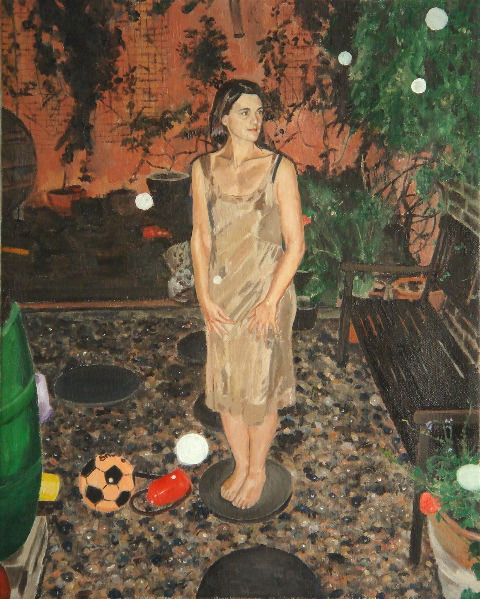
WHAT THESE PAINTINGS MIGHT BE LIKE
These paintings might depict scenes, firmly rooted in the familiar, in which a solitary woman poses.
It might appear to be a similar woman each time.
They might have been painted in rather a precise manner.
They might look a little cinematic.
Perhaps there is a literal quality at play in the style of representation.
It is possible that they took quite a long time to do.
Perhaps with some small brushes.
They might seem rather enigmatic.
The settings might appear to be ‘at home’.
It is conceivable that they are never what they might seem.
Perhaps they were inevitable.
after the butcher is pleased to present Jeremy Glogan’s first solo exhibition in Germany. Glogan was born in London in 1967. He studied at Camberwell School of Art and Crafts. Recent shows include ‘Jewels in Art’ with Josephine Pryde, Sarah Staton and Merlin Carpenter, Galerie Bleich-Rossi Graz 2001; ‘GLOGAN’, Gallery McGillivray London 2002; ‘When in Doubt Blame The Victim’ with Merlin Carpenter, Galerie Bleich-Rossi Graz 2003; ‘The Hydrogenation and Trans Fatty Acid Time Bomb’, McAllister Institute New York 2003 and most recently ‘Rudolf?’, Galerie Bleich-Rossi Vienna in 2005. Since 1997 he has run The Top Room in London overseeing exhibitions by Michael Krebber, Mel Bochner and Nils Norman amongst others. In 2007 he will be showing at The Tate Gallery, St Ives in the exhibition ‘Brian Wilson An Art Exhibition’.